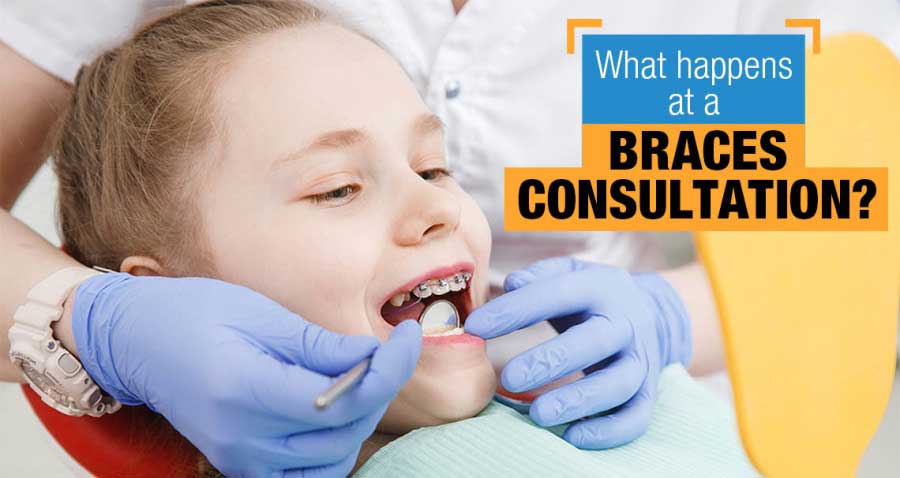Leading Tips for Selecting the very best Cumming Orthodontist for Braces and Aligners
Leading Tips for Selecting the very best Cumming Orthodontist for Braces and Aligners
Blog Article
Comprehensive Overview to Orthodontics Treatments for Fixing Oral Misalignments
In the realm of orthodontics, the journey to accomplishing a completely straightened smile involves a myriad of procedures customized to fix dental misalignments. From conventional dental braces to invisible aligners and also surgical choices, the area of orthodontics provides a range of services to attend to differing degrees of dental irregularities. Comprehending the details of each treatment, including their devices, advantages, and prospective disadvantages, is important in making informed choices about one's orthodontic therapy. As we browse through the detailed guide to orthodontic treatments for remedying dental imbalances, the detailed details of each approach will unravel, losing light on the path towards a harmonious and practical oral placement.
Orthodontic Procedures Overview

Along with clear aligners and standard dental braces, orthodontists might likewise suggest various other interventions like headgear, palatal expanders, or retainers to attend to certain alignment concerns (cumming orthodontics). These procedures are tailored to each client's special demands and might involve a combination of treatments to accomplish the preferred results. Routine modifications and surveillance are crucial components of orthodontic treatment to guarantee progression is on track and to make any type of required modifications in the process. By undergoing orthodontic treatments, patients can not only accomplish a straighter grin yet also enhance their total oral health and wellness and feature.
Standard Braces: Exactly How They Function
When considering orthodontic treatments for oral imbalances, conventional braces stand out as a tried and true technique for correcting teeth placing. Conventional braces consist of brackets, cords, and bands that function together to apply constant pressure on the teeth, progressively moving them into the preferred alignment.
One secret element of exactly how conventional braces job is the procedure of bone improvement. As stress is used to the teeth with the braces, the bone bordering the teeth is reshaped to support the new tooth positions. This makeover is vital for the lasting security of the fixed positioning. Individuals will need routine modifications at the orthodontist's workplace to guarantee the braces proceed to use the right pressure for effective teeth activity.
Unnoticeable Aligners: Disadvantages and pros
Unnoticeable aligners supply a practical and discreet option to traditional braces for fixing oral imbalances. These clear, custom-made trays are virtually invisible when put on, making them an attractive option for individuals looking for an extra aesthetically pleasing orthodontic treatment. One of the main advantages of unseen aligners is their removability, allowing for easier maintenance of dental hygiene compared to traditional braces. Clients can eliminate the aligners before consuming or cleaning their teeth, lowering the risk of food getting embeded the device and simplifying the cleansing process.

Surgical Orthodontic Options
Surgical interventions in orthodontics present viable options for attending to intricate dental misalignments that may not be successfully solved via traditional orthodontic treatments. While undetectable aligners and conventional dental braces can correct lots of orthodontic concerns, particular cases need medical intervention to achieve optimal outcomes. Surgical orthodontic choices are commonly suggested for extreme malocclusions, considerable jaw inconsistencies, and situations where the underlying bone structure needs alteration to achieve proper placement.
One typical surgical orthodontic procedure is orthognathic surgical procedure, which includes rearranging the jaws to correct practical issues such as difficulty eating or speaking. This surgical treatment is commonly executed in partnership with an orthodontist who assists straighten the teeth before and after the procedure. Surgical orthodontics might additionally entail procedures to subject impacted teeth, eliminate excess periodontal cells, or improve the jawbone to create a much more unified face profile.
Before taking into consideration medical orthodontic options, clients go through an extensive analysis to determine the requirement and potential advantages of such treatments. orthodontics. While surgical treatment may seem overwhelming, it can dramatically boost both the function and aesthetic appeals of the smile in instances where conventional orthodontic therapies fail
Retainers and Post-Treatment Treatment

Failure to comply with post-treatment care directions can result in regression, where the teeth progressively move back towards their initial settings. Consistent retainer wear, great oral health, and regular dental exams are important for maintaining the results achieved via orthodontic surgery and ensuring the long-lasting security of the corrected dental placement.
Final Thought
To conclude, orthodontic procedures supply numerous options for dealing with dental misalignments. Typical braces utilize steel brackets and cords to move teeth into correct placement. Invisible aligners give a more very discreet choice however might not appropriate for all instances. Surgical orthodontic choices are readily available for extra serious misalignments. Retainers are commonly made use of post-treatment to maintain the new positioning. Overall, orthodontic procedures can effectively boost dental health and wellness and visual look.
As we navigate through the detailed guide to orthodontic procedures for dealing with oral misalignments, the elaborate details of each approach will unravel, dropping light on the path towards a harmonious and functional oral placement. - orthodontics
One of the most usual orthodontic treatments is the use of dental braces, which are composed of metal brackets and cords that apply walk in dental care mild stress to progressively change teeth right into the desired setting.When thinking about orthodontic therapies original site for dental misalignments, typical braces stand out as a tried and true approach for fixing teeth positioning. Additionally, undetectable aligners may not be ideal for intricate orthodontic issues that need even more significant teeth motion, as they are normally recommended for light to moderate situations. Retainers are tailor-made orthodontic tools developed to hold teeth in their fixed settings after the completion of orthodontic treatment.
Report this page